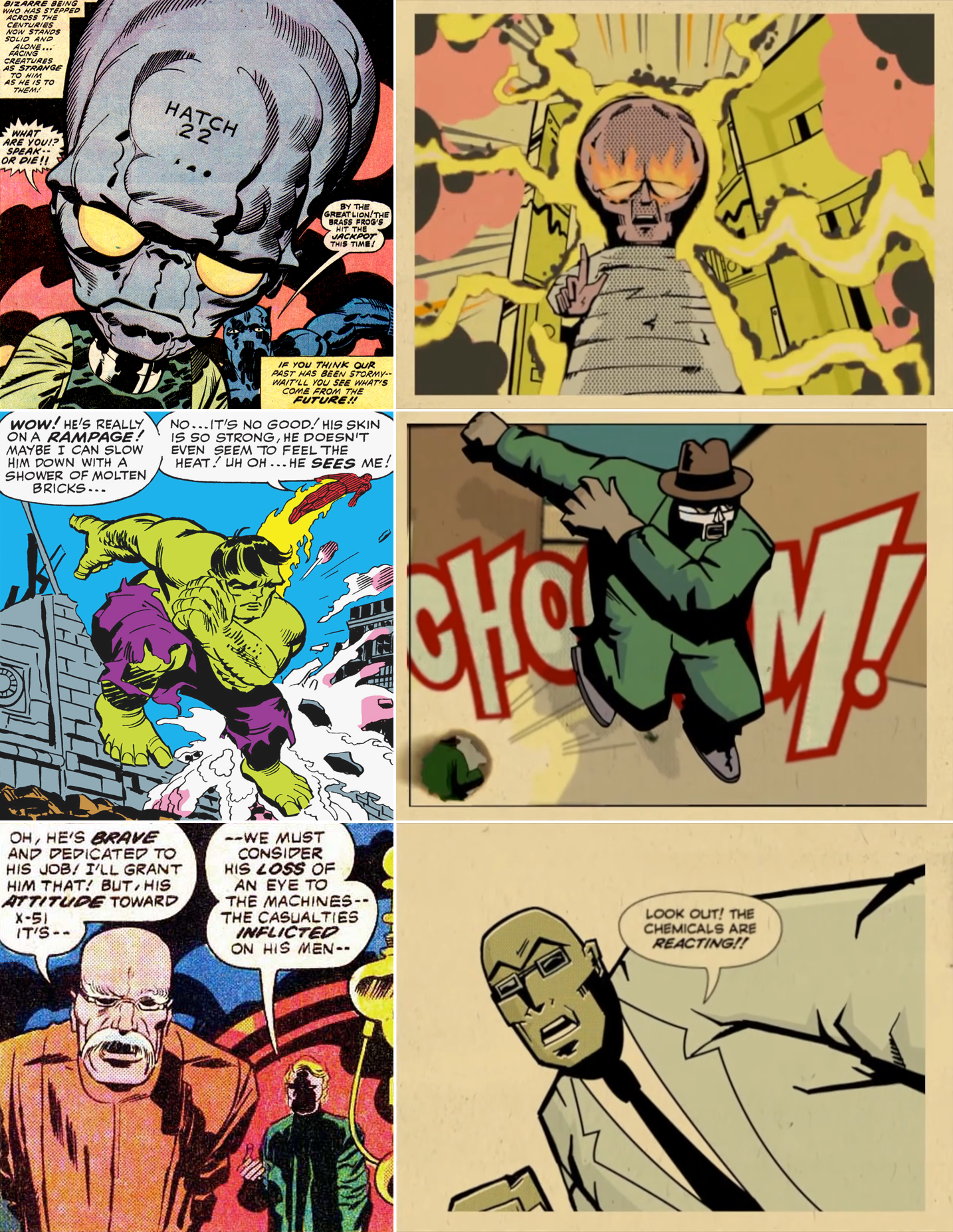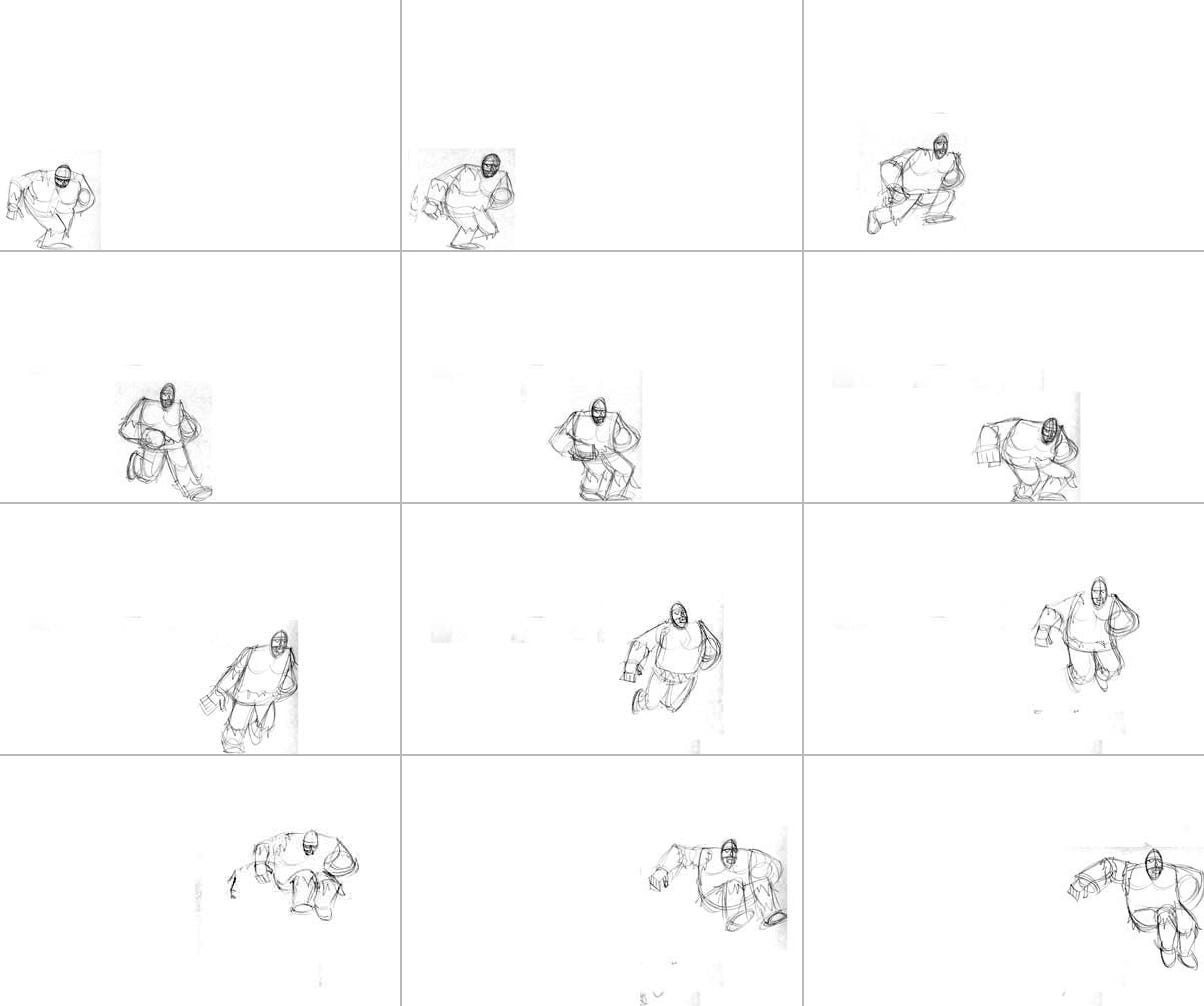Welcome! It’s time again for the Animation Obsessive newsletter. This is what we’re doing today:
1️⃣ The making of the music video for All Caps by Madvillain.
2️⃣ Animation news.
3️⃣ [MEMBERS] Looking back at the Armenian classic Hunters by Robert Sahakyants.
New here? It’s free to sign up for our Sunday issues. Get them in your inbox, weekly:
With that, we’re off!
1. Cartoon villainy
Two years ago, on Halloween 2020, the enigmatic rapper DOOM passed away. He’d staked out a career as a musical weirdo and lyrical wizard. His work influenced too many other, bigger artists to count — from Thom Yorke to Tyler, the Creator.
A lot of things set DOOM apart and made him inspiring, like the memorable beats (Lemon Grass) and uncopyable lines (“get a paper water fountain glass,” “thought they were slaughter-proof” or “in effect like alternate side of the street parking rules”). Also up there: his unusually close ties to comic books and cartoons.
Animation, comics and hip hop aesthetics aren’t strangers. When someone asked the music video director Hype Williams about his visual influences in 1999, he listed anime and comic books as two of the largest.1 But DOOM took it further. His music samples Scooby-Doo and the 1960s Spider-Man cartoons. He made an album about Adult Swim. He named himself after Doctor Doom.
So, it’s fitting that DOOM is attached to the most iconic animated hip hop video to date — the one for the song All Caps (2004) by Madvillain. There’s a good chance you’ve seen it. Today, we’re looking at how and why it exists.
The story begins with a man named James Reitano, a commercial artist with strong ties to the hip hop world.
Reitano grew up in Santa Cruz, doing graffiti as a teenager. He lived that lifestyle into his mid-20s.2 “I was obsessed,” he said. Then he landed a job as a designer at Santa Cruz Skateboards in 1994, which opened a new chapter in his life. As Reitano tells it, this was essentially his college education. It prepared him for everything ahead.
His first real experience with animation only came in the late ‘90s, though. He learned the ropes at a Los Angeles startup. Afterward, hip hop producer KutMasta Kurt (a friend) asked him to put this newfound skill to use on a music video. For Reitano, it was a leap of faith:
I had just learned animation when I moved down to LA, and he’s the one who said to me, “So, I’m putting out this record with [Kool] Keith and Motion [Man], and it’s called Masters of Illusion. And we want to do an animated video.”
And I said, “Well, I’ve never done anything longer than 30 seconds. I can’t do three minutes.” In animation, three minutes is like a lifetime. [He was like,] “Ah, you can do it. You can do it.” … So, I spent two months in my kitchen … and I built that video. And we put it out, and it got a lot of coverage. And then the phone started ringing, man. And everything changed after that.
By itself, that project was intimidating. The doors it opened were even scarier — like an offer from the legendary Biz Markie. Even so, Reitano kept accepting the jobs, and he kept getting better. Which made All Caps possible.
As Reitano wrote, the process for All Caps “started with a single cold email, sent back in 2003.” He wanted to work with Madlib — the innovative beatmaker whose work Reitano idolized. So, he reached out to Stones Throw Records in LA, where Madlib was putting out music.
That cold email to the head of Stones Throw got a reply: a green light for Reitano to pitch the video idea he’d been considering that year. As he wrote later:
In summer of 2003, I’d rediscovered the Grantray-Lawrence series of Marvel Comics cartoons. I distinctly remember these as a kid [and] that my brother and I would laugh and make fun of these embarrassingly simple animations.… I had the idea to recreate something like this for a music video, as mostly an inside joke.
His idea clicked with the label. As a result, Reitano came aboard to do a video for Madvillain — the collective name that Madlib and DOOM were using for their new album, Madvillainy. Little did anyone suspect that it would be one of the decade’s most influential hip hop acts.
As Reitano’s video project revved up, he had his first chat with DOOM, whose music he wasn’t as familiar with. Here’s how Reitano described the encounter:
… it was pretty clear he was a hardcore comic book fan. When someone starts talking about artists and writers and editors of comics, you know you’re dealing with a real aficionado. And we did just that for the better part of an hour. At that point, I figured I had his blessing to do what I had in mind.
The plan ended up being bigger than a parody. He and DOOM both loved the work of artist Jack Kirby, and the video would be an homage to Kirby’s style. Reitano referenced panels from old Kirby comics — and borrowed Kirby’s character design sensibility to make cartoon avatars for DOOM and Madlib. “We talked about trench coats, fedora hats and CIA looking guys,” Reitano said.
Doing the Kirby style justice meant doing it, for the most part, on paper. Reitano penciled and inked the animation for All Caps himself, then scanned it and converted his drawings into vector images.
As it progressed, the video started getting more and more ambitious — more motion, more bells and whistles. It took roughly a thousand drawings in the end. For certain shots, Reitano traced over rudimentary 3D models to allow for complex camera movements. For others, the idea arose to have “ ‘comic ads’ that would come to life,” Reitano wrote. That meant filming greenscreen footage of actors, too.
According to Reitano, the “cinematic” nature of the music guided most of the video’s content — the twists, the fights, the car chases. That climactic scene, on the cliffside road, was based on the original Italian Job.

At his computer, Reitano used Illustrator to color his linework. He did the final shot composites in After Effects and Flash. But he found that the style he’d picked was resistant to being animated. According to Reitano:
Most animators I knew said, “You’re animating huge black key lines? That’s the dumbest thing you can do!” I pressed ahead nevertheless. I also became obsessed with CMYK dots and how they could be worked in. And yeah, everyone was right.
As Reitano wrote on his blog, “About four weeks or so into the production, I soon realized this was easily a three-month job (I’d originally budgeted for two months).” The result was a brutal crunch. Reitano again:
About 3/4 of the way through, I started to lose my mind. I was inking and drawing and redrawing so many frames that I started to lose track. I just pushed ahead and hoped it would all come together. And at that point it’s always hard to tell if what I’ve [done] so far is any good.
In the end, Reitano was a little down on All Caps. And he kept wondering over the years what the video could have been — once calling it “a second-rate Kirby attempt.” But it was, in fact, very good. His clients were happy. By early 2004, it was spreading online.
Reitano had only been animating for a few years, but he’d managed to craft a classic. His career took off.
“I can’t even begin to describe to you the amount of work I got from this,” Reitano wrote this year. The number of people who asked him to recreate the All Caps style is kind of shocking. He got hired to use it in a Times Square billboard display for Serena Williams (see it here). There was an unreleased Wu-Tang Clan graphic novel. Artists were paying Reitano to animate All Caps-inspired videos well into the 2010s.
And why not? Over 18 years later, Reitano’s original still shines. Where so many animated music videos from that era show their age, this one looks as new as ever. All because he’d accepted a few video projects in the early ‘00s — and sent a cold email. He summed it up this way on Splendid Radio last year:
When the Masters of Illusion thing happened, I didn’t do those things. I didn’t do those types of projects. And I basically told Kurt, “I don’t do that.” And he said, “Well, why don’t you just try?” I could have easily just said, “No,” and gone on with my merry life. But, you know what? I took a chance ... sometimes, you just have to do something scary.
2. Newsbits
We lost Jules Bass (87) of Rankin/Bass, the studio behind The Last Unicorn and Rudolph the Red-Nosed Reindeer.
In Japan, Studio Ghibli president Koji Hoshino says that How Do You Live? by Hayao Miyazaki is “just around the corner.”
The Chinese outlet Anim-Babblers dove deep into the Kongzang Animation & Comics Archive — a project to catalog the oral history of Shanghai Animation Film Studio. It’s collected 400 hours of interviews, and an initial book of its findings is being crowdfunded on Modian right now.
Romania is the latest European country to place a levy on streamers and other video-on-demand services. It will go to support the country’s local film industry. This is a move to watch as Europe debates the siphoning effect of streaming.
An American story: William Joyce spoke with Animation Magazine about his upcoming short Mr. Spam Gets a New Hat, and its roots in early film.
Animation Magazine also profiled the Irish film My Father’s Dragon.
Russian state media reports that the Animated Film Association (AAK) will be involved, starting November, in the “support, training and integration into Russia” of animation schools and studios in the Donbas. Students will be invited next year to create work based on “Russian literature and poetry.” The AAK opposed the war in February, but is now apparently aiding Putin’s illegal landgrab.
An upcoming Chinese animated series, To Be Hero X, is drawing a lot of international attention. See more (and the viral trailer) via Catsuka.
In Mexico, the festival Pixelatl is asking for submissions to its Shortway 2023 program. Ten participants will have their films put through a mentorship “bootcamp” for a chance to appear at Annecy. (Open to all of Latin America.)
The details have been released for China’s fourth annual Feinaki Beijing Animation Week. It takes place from November 24–27, and will include (among many other things) a screening of Bilibili’s Capsule Project films.
The American film Wendell & Wild is out now on Netflix.
Lastly, we wrote about the bizarre use of sound in Gene Deitch’s Tom and Jerry and Where the Wild Things Are.
3. Quick look back — Hunters
Keep reading with a 7-day free trial
Subscribe to Animation Obsessive to keep reading this post and get 7 days of free access to the full post archives.





